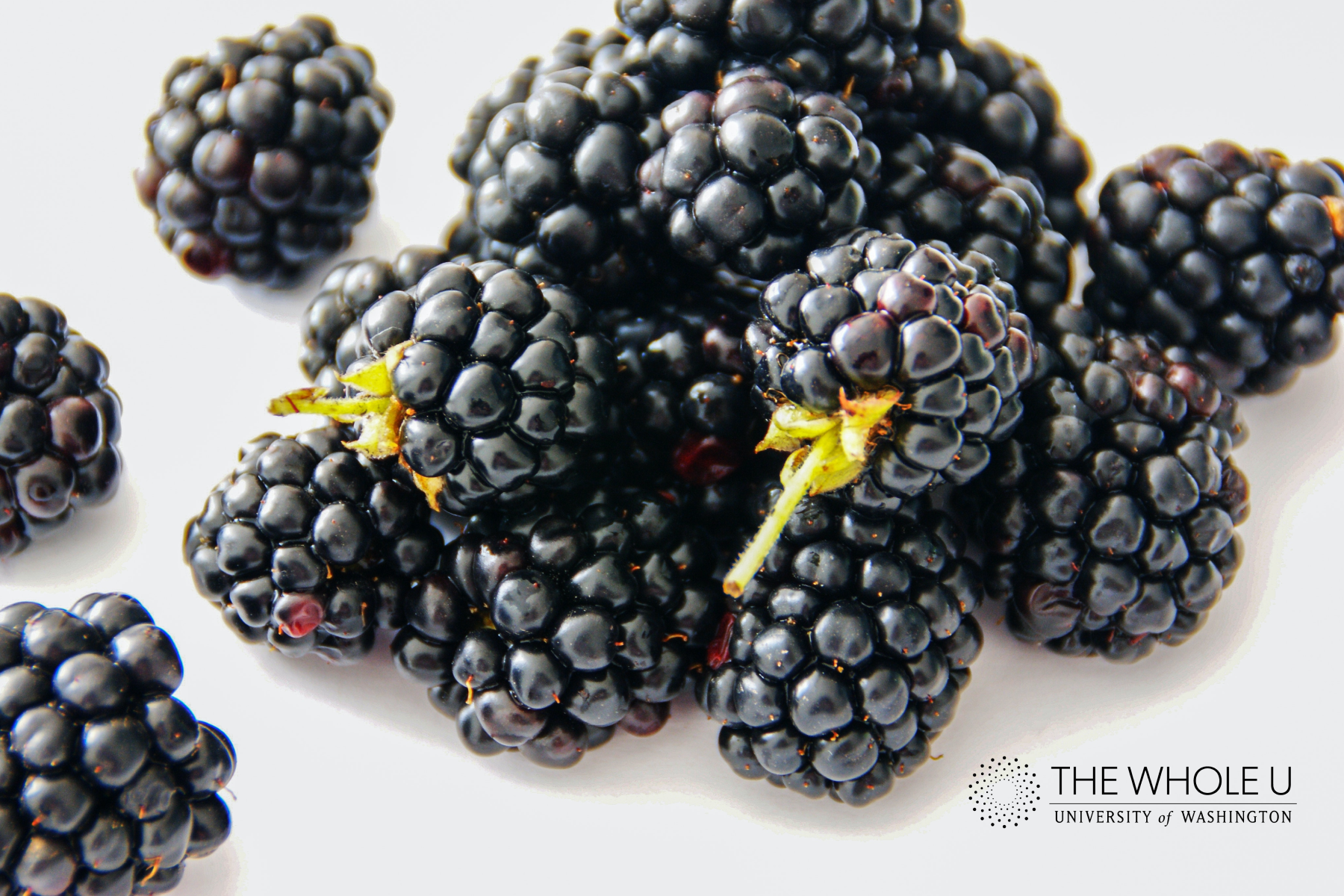
A Quick and Juicy Guide to Berries of the Northwest
Note: This article is a reflection of the author’s first-hand experiences with berries of the Pacific Northwest and is intended as a starting point to get educated and not as a definitive guide. Unfortunately, we are not able to identify berries on a case-by-case basis at this time.
This summer, whether you’re on an intensive hike or just going for a walk down the street, you are bound to come across some berry bushes. Here in the Pacific Northwest, we are gifted with mild temperatures, rich soil, and lots of rain, which gives our native plant species a great environment to take root and flourish.
Growing up, I experienced berry bushes’ beauty and abundance first-hand at summer camp. There, we learned about nature, the woods, plants, animals, and conservation efforts and the camp instructor was always prepared to stop our group to point out a bunch of berries. There is nothing better in summer than picking some right from the bush, however, with so many varieties present in the Pacific Northwest, it can be difficult to know where to start, or which are okay to eat.
While foraging with caution is always recommended, we’ve compiled some basic guidelines for identification, best uses, and taste of some of the most common berries you might find the next time you talk a walk on the wild side.
Common Edible Berries of the Northwest
Blackberries
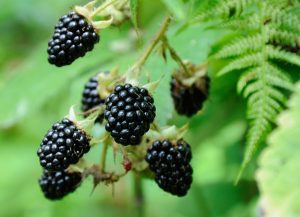
Scientific Name: Rubus
Origins: This berry is known all over the world, but is very popular in the Pacific Northwest. The berry and plant were commonly used by Native Americans in the Pacific Northwest as food and used as a medicinal plant.
Color and shape: Black when mature; red and green when they are still growing. They are bumpy in shape (Beware of thorns on the plant).
Taste: Very sweet when ripe; sour when unripe.
Where to Find Them: Often considered a weed, these berries can be found in backyards and along roadsides across the country. Plants grows well in the sun and large patches are known as brambles.
Peak Season: July through September.
Great in: Jams, jellies, pies, and cobblers, or just eaten as-is.
Salmonberries
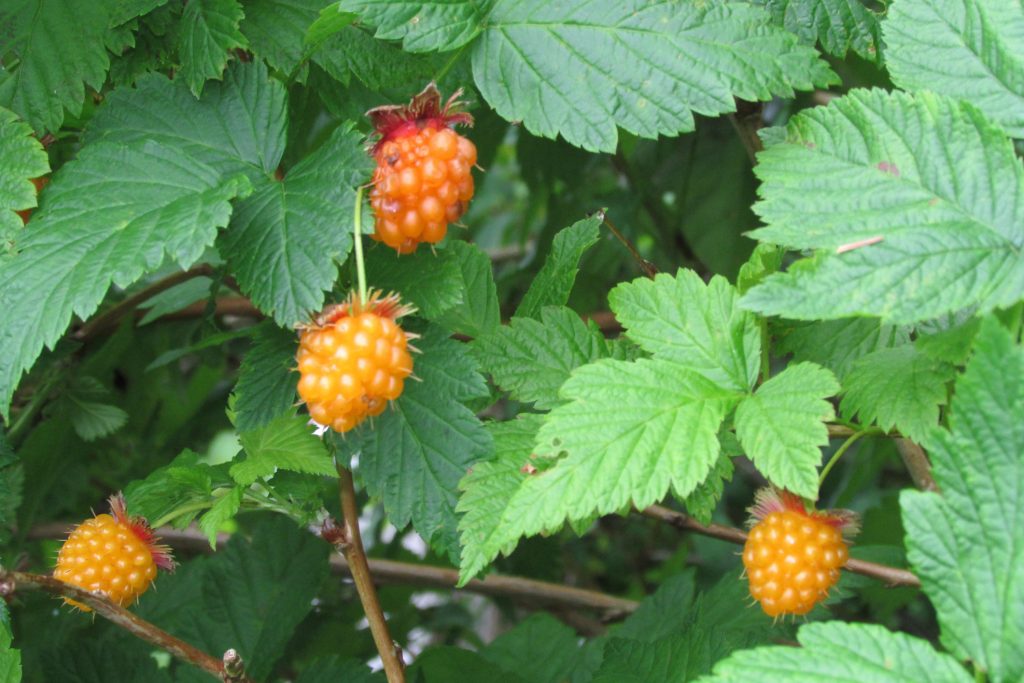
Scientific Name: Rubus spectabilis
Origins: Native to the West coast of North America, salmonberries were traditionally eaten with salmon or salmon roe by Native Americans in the Pacific Northwest.
Color and shape: Mature berries are most commonly a yellow-orange. Younger berries may appear red. Berries are bumpy in shape, much like blackberries (Beware of the thorns on the plant).
Taste: Mildly sweet to neutral taste.
Where to Find Them: The plant prefers moist, shady areas with a bit of sun and can commonly be found near creeks.
Peak Season: Salmonberries are best from early May to late July.
Great when: Eaten as-is.
Huckleberries
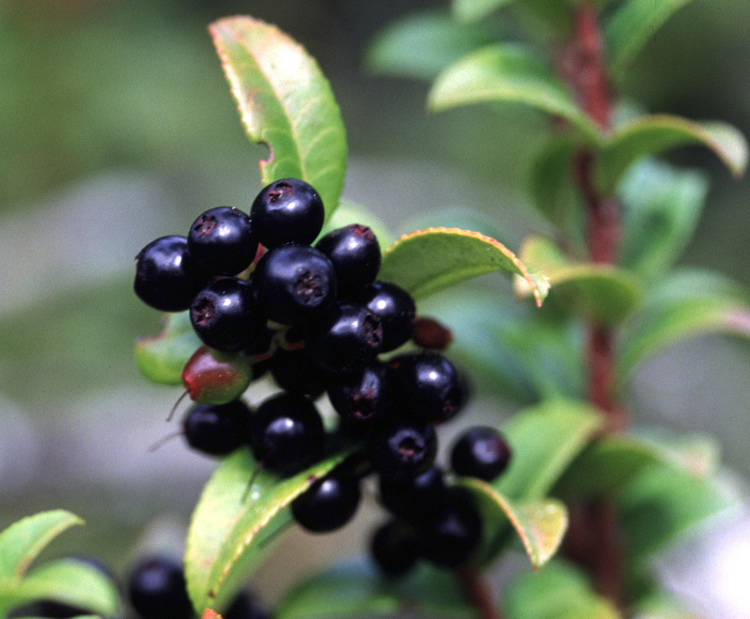
Evergreen variety
Scientific Name: Vaccinium ovatum
Origins: The Native Americans in the Pacific Northwest were fond of this berry, traveling long distances to gather them—eating them fresh, and drying them into cakes.
Color and Shape: Mostly black but can appear bluish or purple, Huckleberries are smooth and round.
Taste: Sweet to tart taste.
Where to Find Them: This shrub thrives mostly in the shade with some sun. It is common to find plants sprouting out of or near downed trees or stumps.
Peak Season: The plant is an evergreen shrub, but produces berries in the summer.
Great in: Jams, pies, cobblers, ice creams, or eaten as-is.
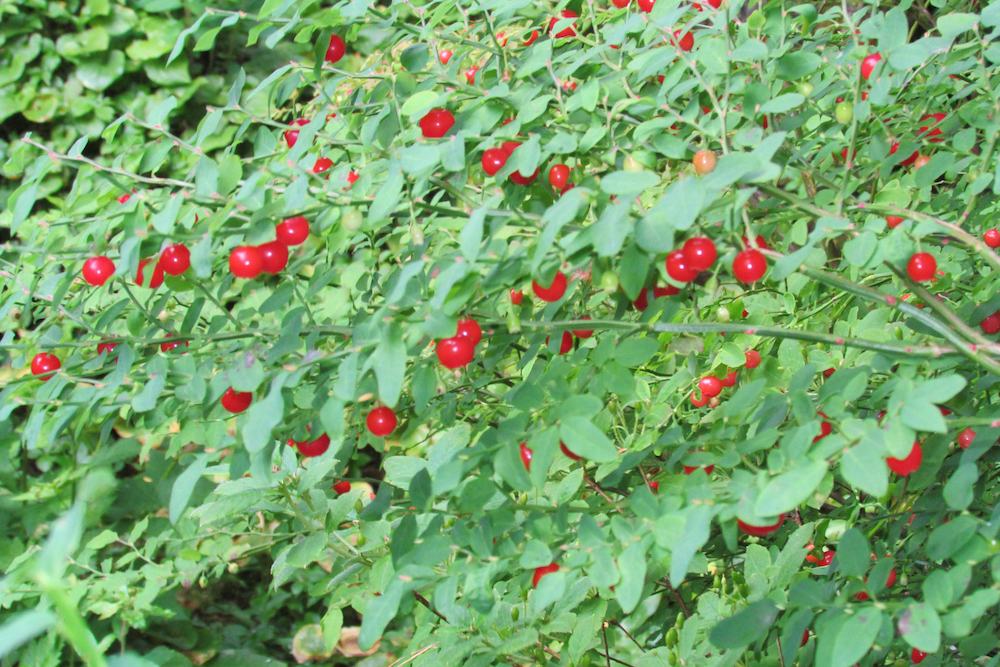
Red variety
Scientific Name: Vaccinium parvifolium
Origins: Native Americans in the Pacific Northwest ate this berry throughout the year—both fresh and dried, often using it as fish bait due to its resemblance to a salmon egg.
Color and shape: Pinkish red berries. They are smooth and round.
Taste: Sweet to tart taste.
Where to Find Them: Similar to its relative the Evergreen Huckleberry, the Red Huckleberry can be found in moist, shady areas, often growing out of or near downed tree trunks or stumps.
Peak Season: Summer
Great In: Jams, jelly, pie, cobbler. Or eaten as-is.
Oregon Grape
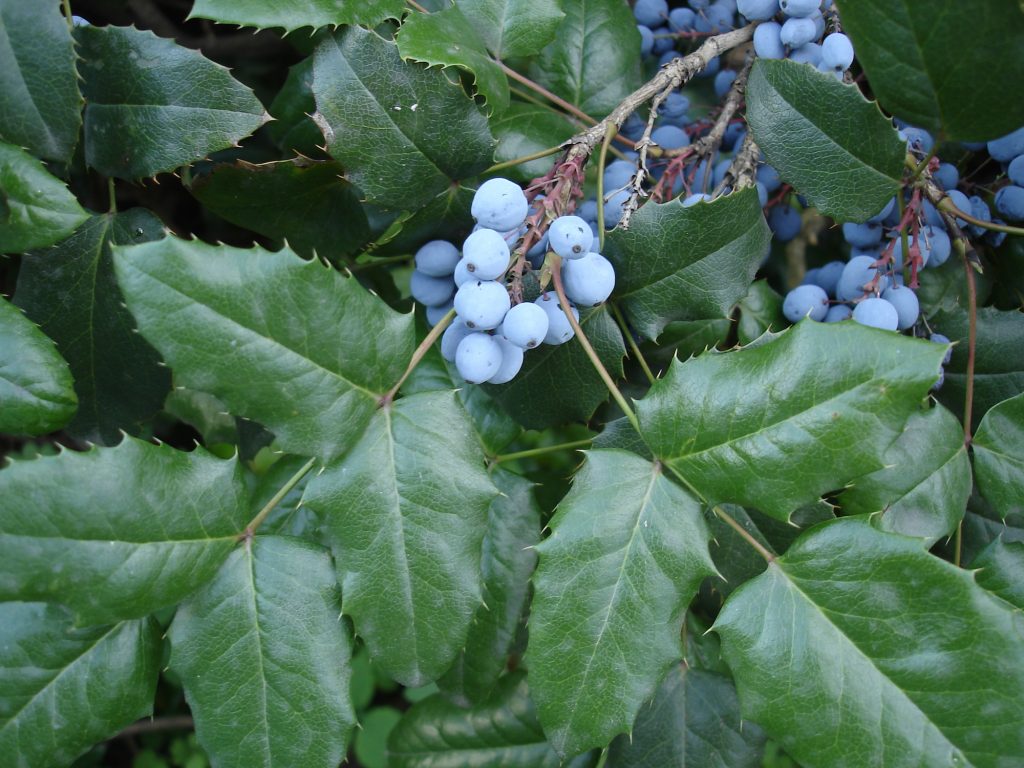
Scientific Name: Mahonia nervosa
Origin: Native Americans in the Pacific Northwest used to eat this berry, but did not favor it, often mixing it with sweeter berries to better its flavor. These berries have also been used for dye and medicinal uses.
Color and shape: Blue/purple. They look and taste nothing like a grape. They are small, smooth, round, or slightly egg-shaped.
Taste: Slightly sour.
Where to Find Them: There are two types of Oregon Grape: the Tall Oregon Grape and the Low Oregon Grape. The Low can be found in relatively moist, open forests while the Tall can handle both dry open areas and moist shady areas. Native to western North America, it can be found from the Rocky Mountains all the way to the Pacific Coast.
Peak Season: The plant blooms in spring and produces berries in the summer.
Great in: Jelly or eaten as-is.
Caution: Consume in moderation, as these berries can be toxic in excess.
Salal Berries
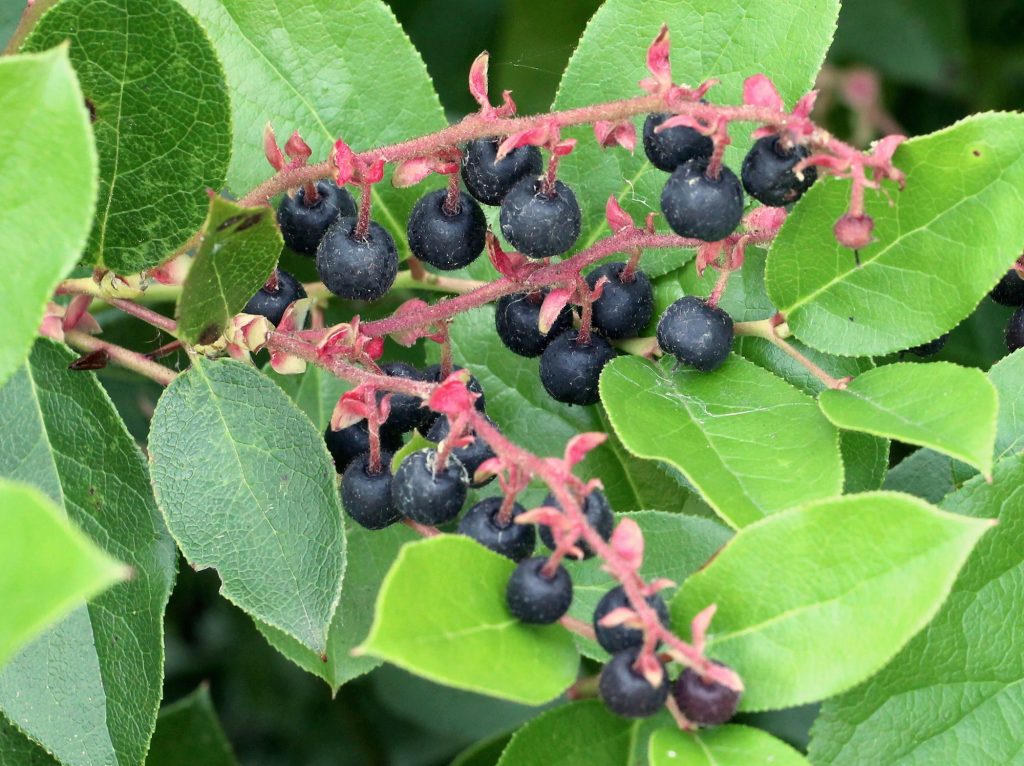
Scientific Name: Gaultheria shallon
Origin: Eaten by Native Americans of the Pacific Northwest in combination with Oregon Grapes to sweeten them, Salal berries were often dried into cakes.
Color and shape: Dark blue, these berries are smooth and oval shaped.
Taste: Sweet with a mealy texture.
Where to Find Them: Salal plants grow anywhere in a variety of climates. They can do well in moist and shady areas and also in partial sun.
Peak Season: August through September.
Great In: Jam and pies.
Thimbleberry
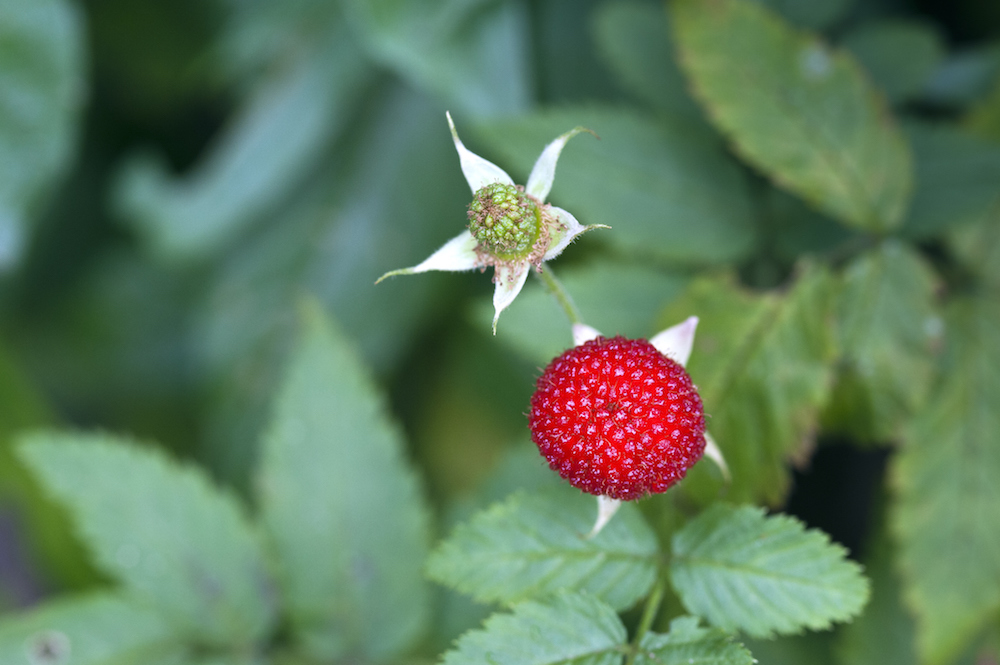
Scientific Name: Rubus parviflorus
Origins: This plant ranges from Alaska down the west coast to north Mexico.
Color and Shape: Bright red when ripe, these berries resemble raspberries. The berries’ hollow shape gives them a resemblance to a thimble, although this plant has no prickles like its cousins. Expect a tart flavor when eaten.
Where to Find Them: Found along roadsides and the edges of clearings, it can be one of the first plants to grow after a fire or clear cut. They prefer shady, moist, and cool areas.
Peak Season: July through August
Great In: Eaten as-is, or in jam.
Black Raspberries
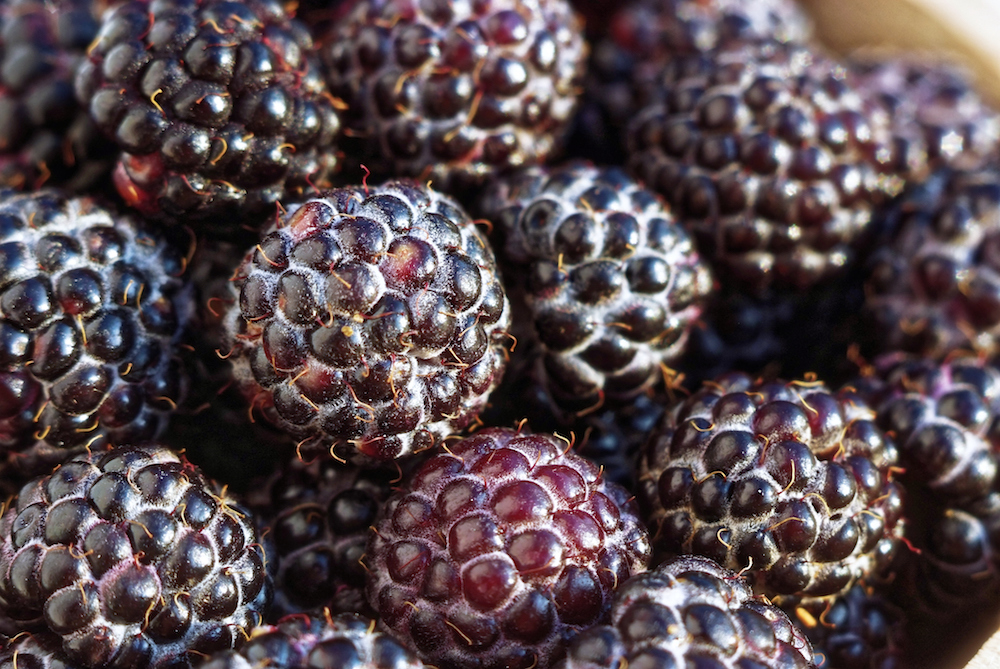
Scientific Name: Rubus leucodermis
Origins: Also known as the Whitebark Raspberry, this plant’s range stretches from the Pacific Northwest to north Mexico.
Color and Shape: Similar in shape to a raspberry, unripe berries range in color from red to dark purple, growing darker as they ripen. A way to tell these berries apart from a regular blackberry is the core: blackberries have a white core, whereas a black raspberry is hollow in the middle like a regular raspberry. Black raspberries tend to be more “fuzzy” like raspberries instead of more smooth like blackberries.
Where to Find Them: Usually found in areas of sun to light shade in fields or wooded hills.
Peak Season: June to September
Great In: Eaten as-is.
Common Toxic Berries of the Northwest
Holly Berries
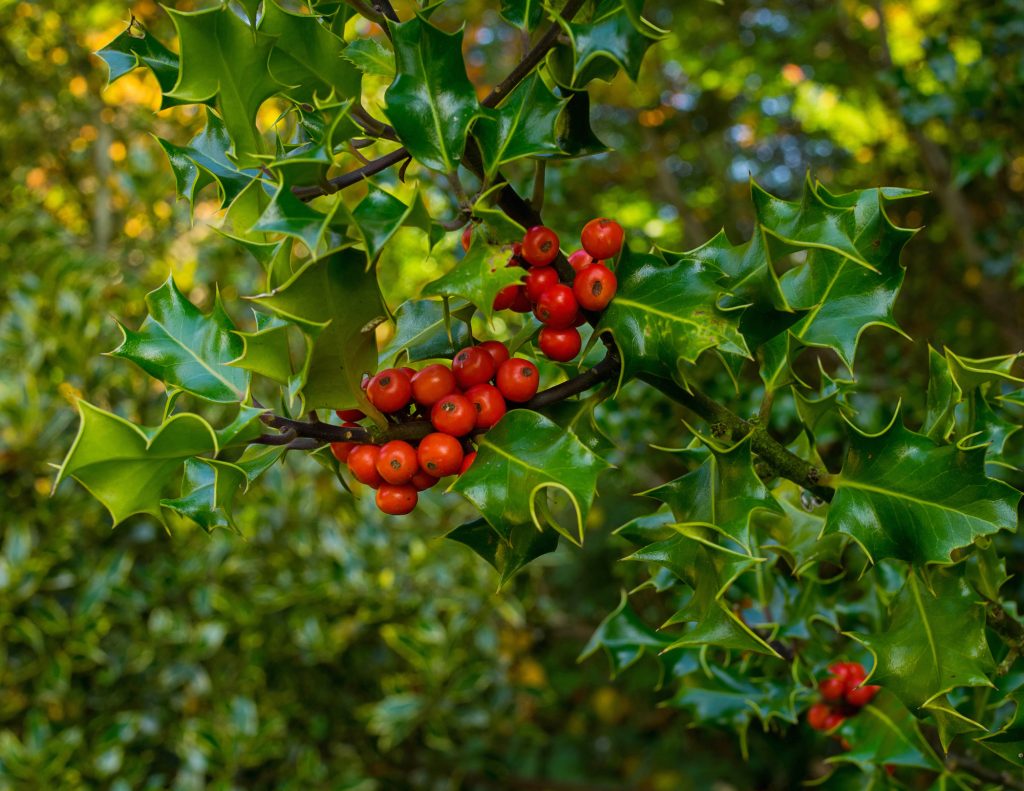
Scientific Name: Ilex aquifolium
Origin: There are many varieties of Holly plant across the world, but one that’s commonly found in the Pacific Northwest is English Holly. Originally native to the British Isles (often used as a decorative shrub in gardens and popular during the Christmas holidays), this evergreen plant is an aggressively invasive species to the West Coast and is found in abundance across Washington stretching all the way to California.
Color and Shape: Bright red, round berries. The leaves are identifiably spiny.
Where to Find Them: This plant thrives in both sun and shade, growing into large thickets choking out native plant life.
Peak Season: The plant is evergreen and the berries ripen in winter.
Caution: Toxic to both humans and pets.
Can Be Confused With: Oregon grape as their leaves are similar.
Bittersweet Nightshade
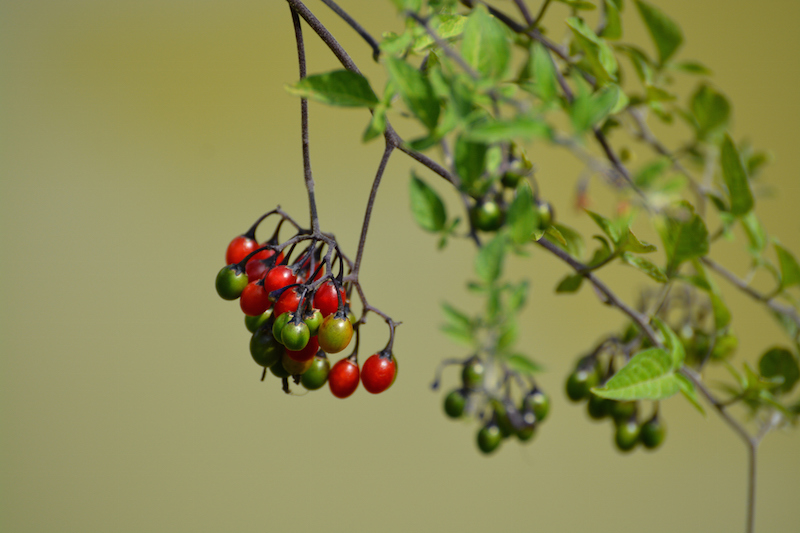
Scientific Name: Solanum dulcamara
Origin: Originally from Europe.
Color and Shape: Small, smooth, oval-shaped red berries, but can also be shades of green and orange when ripening.
Where to Find Them: Found mostly on the edge of empty fields, by roadsides, in backyards, and by streams due to its love of moist, shady areas.
Peak Season: These berries ripen in autumn.
Caution: Toxic to both humans and animals.
Can Be Confused With: Red huckleberry due to similar color and size.
Red Baneberry

Scientific Name: Actaea rubra
Origin: This plant is native to North America and can be found across the Pacific Northwest region. It is widely said Native Americans would use the juice from this poisonous berry to coat arrowheads.
Color and Shape: Shiny, red, and round, these berries often have a small black spot at the bottom of berry—a surefire sign to not consume it!
Where to Find Them: This plant is found most commonly in moist, shady areas, but can be found in dry slopes.
Peak Season: Berries ripen in July.
Caution: The plant is poisonous, but its berries are most toxic. Toxic to humans, it is also avoided by other types of wildlife.
Can Be Confused With: Red Huckleberry- similar in shape, color, and size.
As you enjoy the summer months here in the Pacific Northwest, be on the lookout for these berries in your outdoor adventures. Share a snap of any berries you encounter by emailing wholeu@uw.edu. Always remember, if you are not sure what the berry is, best to look it up first or avoid it altogether. Happy hiking!
3 Thoughts on “A Quick and Juicy Guide to Berries of the Northwest”
On June 28, 2017 at 6:23 AM, Larry Furlong said:
Nice article but you neglected to include my favorite, the Black Raspberry
https://en.wikipedia.org/wiki/Rubus_occidentalis
On June 28, 2017 at 8:53 AM, Margo Hoppis said:
I had some Salmonberries the other day while on a run! Love those!
Another delicious berry in our area worth mentioning is the “Rubus leucodermis”. It’s commonly called a “black raspberry” or “white bark raspberry”. One hallmark of this deciduous shrub is white appearing bark. Lot’s of health benefits currently being studied.
On June 29, 2017 at 10:35 AM, Jeff said:
Two of the best not included above… thimbleberry (https://en.wikipedia.org/wiki/Rubus_parviflorus) and black raspberry (http://depts.washington.edu/propplnt/Plants/Blackcap_raspberry.htm)
Comments are closed.